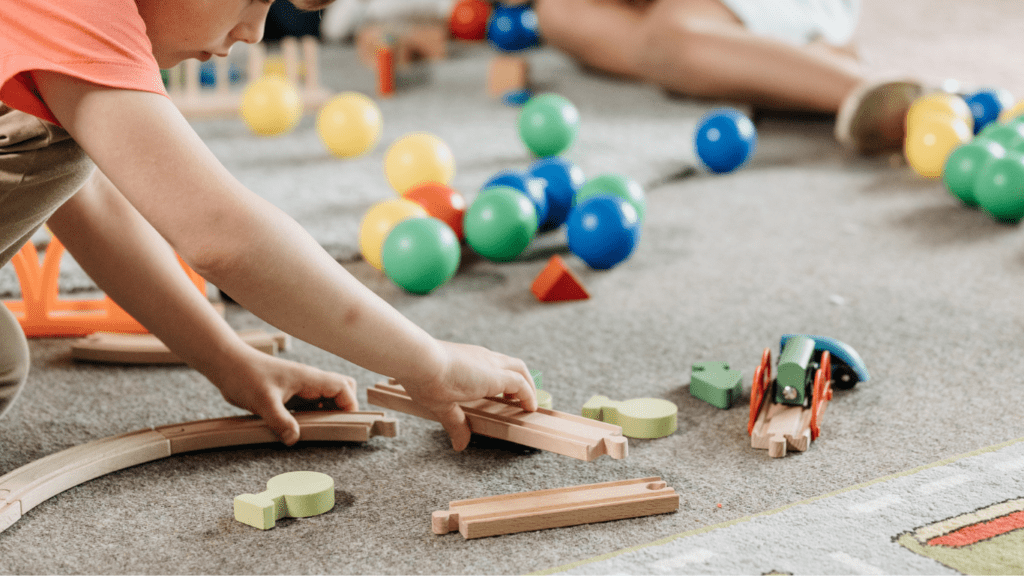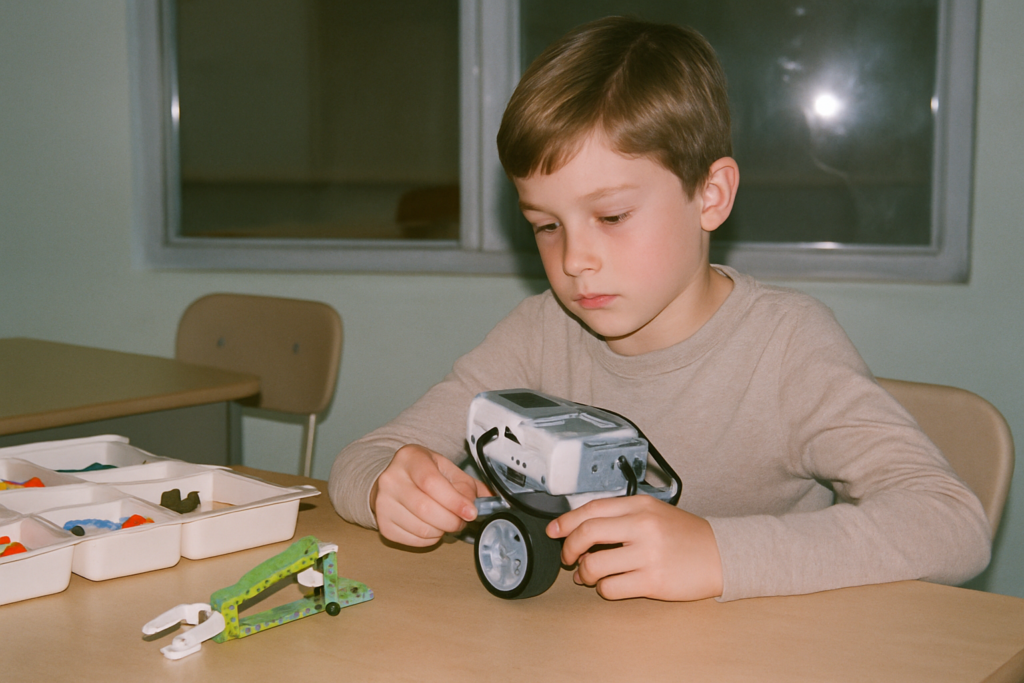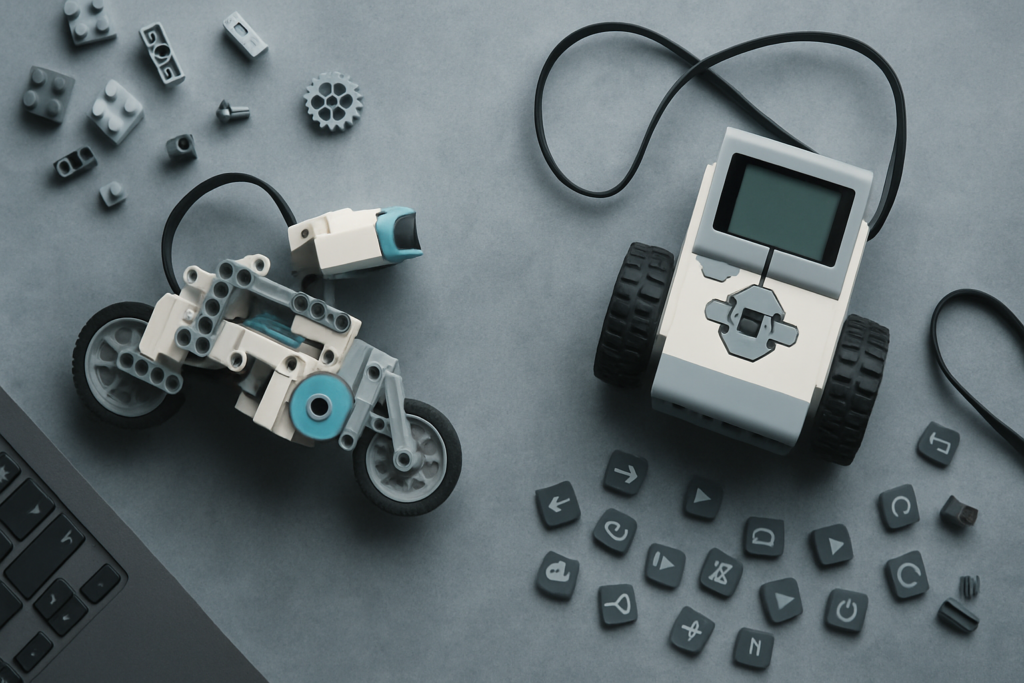The Rise of STEM Toys in Modern Education
STEM toys have become a pivotal part of today’s educational landscape. These toys seamlessly integrate fun and learning, helping kids grasp complex concepts early on.
Why STEM Toys?
STEM toys make learning enjoyable. These toys like:
- coding robots
- chemistry sets
- engineering kits
engage children in interactive and hands-on activities.
This engagement goes beyond passive learning, helping kids build critical thinking and problem-solving skills. By nurturing curiosity, these toys lay a foundation for a lifelong interest in science, technology, engineering, and math.
The Impact on Early Childhood Development
STEM toys significantly enhance early childhood development. Introducing STEM concepts at a young age aids cognitive development.
For instance, puzzles improve spatial awareness, and building blocks enhance fine motor skills. These toys also promote social skills through collaborative play, boosting communication and teamwork.
Incorporating STEM activities helps children develop resilience, as they learn to embrace challenges and persist in finding solutions.
Exploring the Connection Between Gaming and Learning
STEM toys bridge the gap between fun and education by integrating gaming elements with learning objectives. This connection enhances various cognitive and developmental skills in children.
Cognitive Benefits of Educational Games
Educational games offer numerous cognitive benefits.
These games improve problem-solving abilities by presenting challenges that require strategic thinking.
Puzzle games, for example, enhance cognitive flexibility by requiring players to adapt their strategies based on changing scenarios.
Memory retention improves as well. Memory-based games challenge players to recall sequences, patterns, and information.
Educational video games often incorporate storytelling, which helps kids remember key facts and concepts.
Attention span increases through sustained engagement. Action games demand quick reactions and sustained focus, helping kids enhance their concentration over time.
Games like “Minecraft” facilitate attention to detail, as players construct intricate structures and navigate complex environments.
How Gaming Encourages Learning
Gaming encourages learning through interactive and immersive experiences. Games employ a trial-and-error approach that reinforces learning by rewarding correct solutions and providing feedback on mistakes.
This method helps kids retain information better than traditional learning methods.
Collaboration and teamwork are fostered in multiplayer games. Titles like “Roblox” and “Fortnite” require players to communicate and collaborate, honing their social and communication skills.
These games also emphasize leadership and cooperation among peers.
Motivation to learn specific subjects increases when children see direct applications of skills in games. For instance, coding games encourage an interest in computer science by making programming fun and accessible.
Physics-based games illustrate principles of motion and force in an engaging manner, sparking curiosity and a deeper understanding of the subject matter.
Top Recommended STEM Toys for Different Age Groups

Selecting the right STEM toy depends on a child’s age. Here are some top recommendations.
Infants and Toddlers
At this age, STEM toys should focus on sensory exploration. I recommend soft building blocks and shape sorters. These toys encourage spatial awareness and hand-eye coordination.
Activity centers with light and sound buttons introduce basic cause-and-effect relationships.
School-Aged Children
For school-aged kids, more complex toys are suitable. I suggest robot-building kits and coding games. Robot kits teach engineering principles and problem-solving.
Coding games, like CodeMonkey, introduce programming basics in an engaging way. Science kits, such as chemistry sets, provide hands-on learning in scientific concepts.
Each toy helps children apply key STEM concepts in a fun, interactive manner.
Incorporating STEM Toys into Everyday Play
Incorporating STEM toys into daily activities can enhance kids’ learning experiences outside of the classroom. Integrating these toys naturally into playtimes helps bridge the gap between fun and education.
Practical Tips for Parents and Educators
- Create a Rotating Toy Schedule: Introduce new STEM toys regularly to keep kids engaged. For example, alternate between robot-building kits and coding games to maintain their interest and explore different skill sets.
- Integrate Toys Into Daily Routines: Use STEM toys during common activities. Encourage kids to build structures with blocks while discussing engineering concepts or explore science kits during craft time.
- Collaborate During Play: Engage with kids while they use STEM toys. Ask questions to stimulate problem-solving skills, such as, “How can we improve this design?” This creates a collaborative environment that enhances learning.
- Leverage Multimedia Resources: Combine traditional toys with digital resources. Many apps and online platforms complement physical STEM toys, providing interactive tutorials and challenges that deepen the educational experience.
- Encourage Peer Interaction: Organize playdates centered around STEM activities. Group projects, like constructing a simple robot, enhance teamwork skills and make learning social and fun.
- Addressing Initial Resistance: If children seem disinterested, integrate STEM toys subtly into existing play patterns. Start with familiar characters or themes to ease the introduction.
- Managing Complexity: Choose age-appropriate toys that balance challenge and skill level. For younger kids, select simpler kits like basic coding blocks. Older kids may enjoy intricate projects like programmable robots.
- Balancing Screen Time: While some STEM toys are digital, limit screen usage by setting specific times for digital play and encouraging more hands-on activities.
- Budget Constraints: STEM toys can be expensive. Watch for sales and discounts or consider DIY kits that use everyday household items to teach STEM concepts effectively.
- Ensuring Consistency: Regular engagement with STEM toys is key. Set a schedule for weekly STEM playtime, combining it with other routine activities to make it habitual.
Incorporating STEM toys into everyday play aligns perfectly with children’s natural inquisitiveness, fostering cognitive growth and sparking a lifelong interest in science, technology, engineering, and math.



